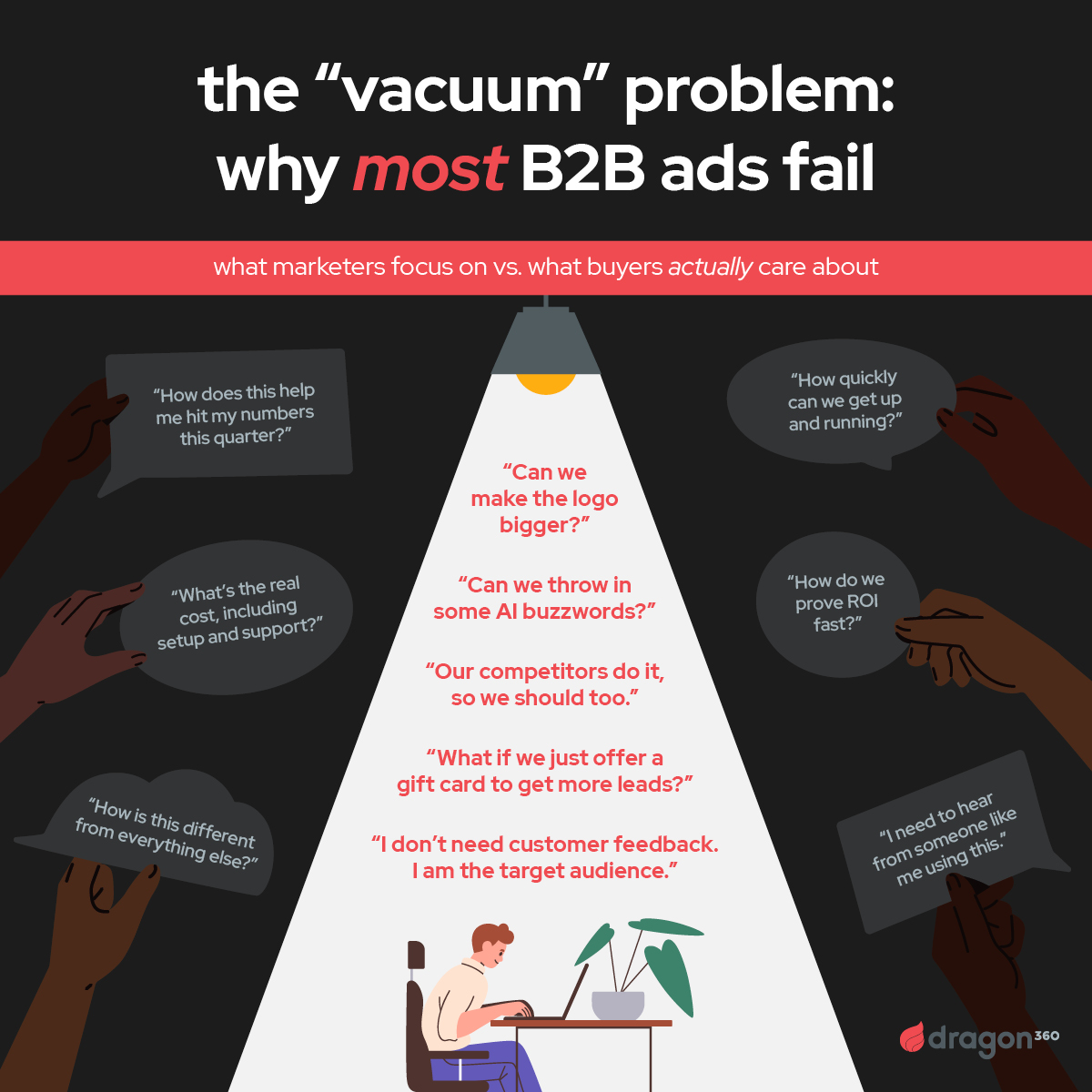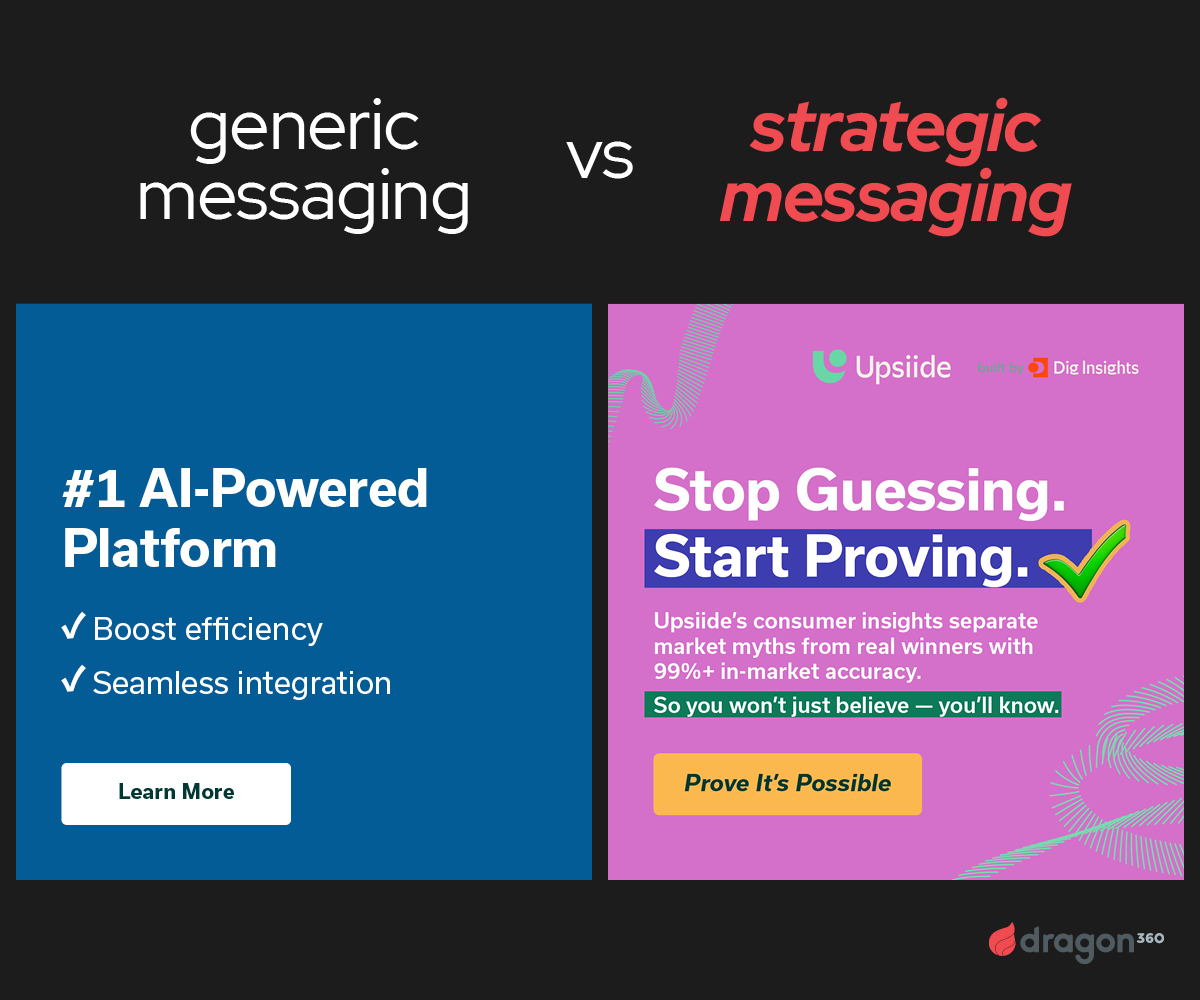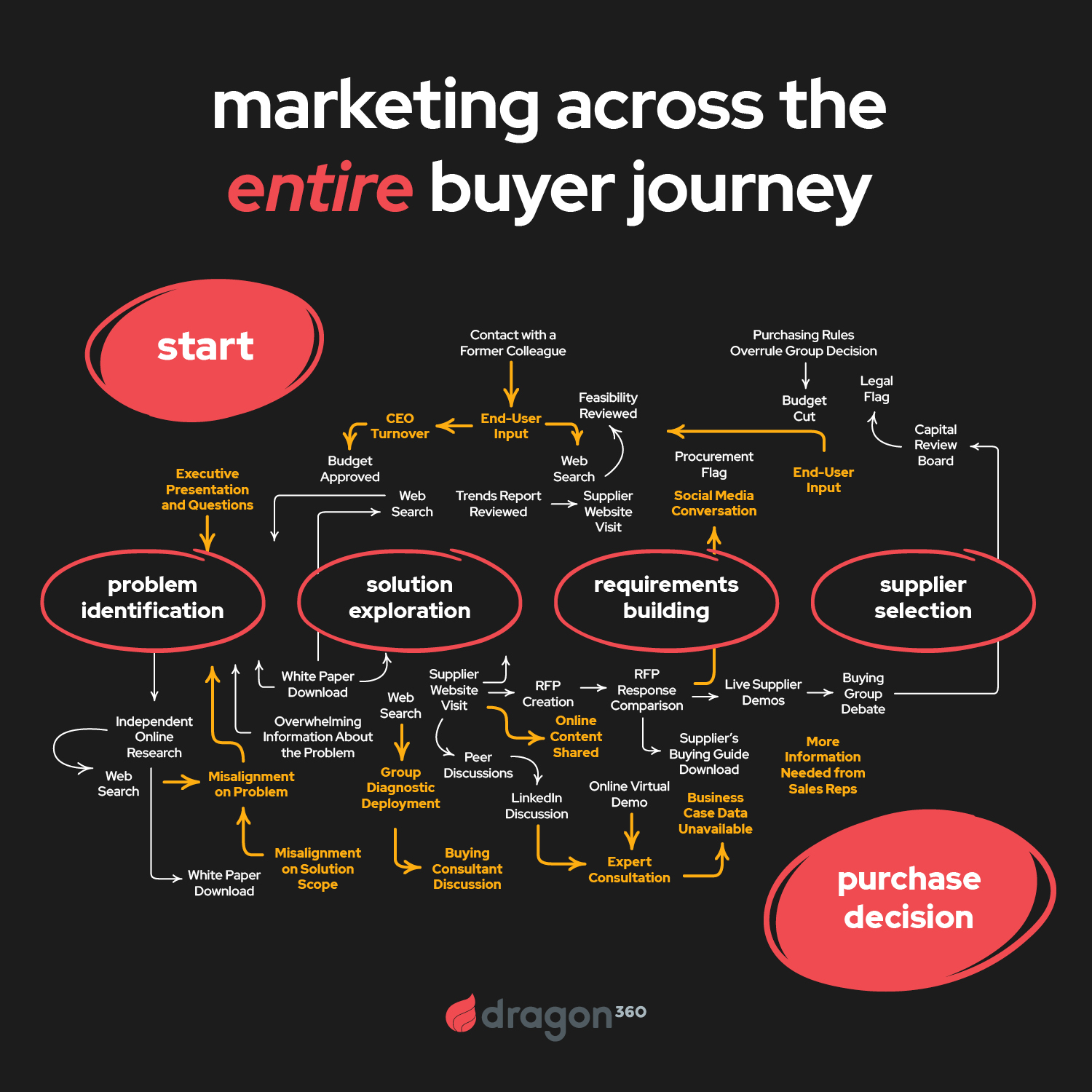Stop Winging It -
Get The Complete B2B Paid Media Guide
Learn how to develop creative that converts and strategy that scales.

Let’s be honest – most B2B ads suck. Not just visually (though that’s a problem too), but in how they actually connect with buyers.
They’re built in a vacuum, without real insight into how customers think, what influences their decision-making, or what gets them to take action. Instead, they focus on surface-level engagement metrics, clever copy, and generic pain points that don’t actually move the needle.

The result? Ads that might get clicks but fail to drive real opportunities, pipeline, or revenue.
The best B2B ads don’t start with a creative concept. They start with customer intelligence. That means understanding what buyers actually care about, how they make decisions, and what messaging will resonate with them at different stages of their journey.
Too many B2B ads are created without a clear understanding of who actually drives decisions. Marketers often default to targeting decision-makers such as CEOs or CFOs, but in many industries, they aren’t the ones doing the research, evaluating options, or advocating for change internally.
B2B buying decisions are rarely made by one person alone. Champions, blockers, and executive stakeholders all play a role in moving a deal forward or shutting it down. Ads that don’t acknowledge these dynamics will struggle to resonate.
What to do instead: The most effective ads don’t just speak to the final decision-maker. They engage all stakeholders involved in the process. Target the champions who research and advocate for solutions internally. Address the blockers who raise objections over budget, compliance, or operational fit. Reinforce credibility for executives who need confidence that a solution is worth the investment.

One of the biggest failures in B2B advertising is sounding exactly like everyone else. Many ads rely on broad, high-level statements such as:
These statements could apply to any competitor in the space. They don’t differentiate your solution, and they don’t tap into the emotional and business triggers that make buyers pay attention.
What to do instead: Build messaging based on actual customer insights. Identify the exact frustrations buyers are experiencing today by gathering feedback from recent closed deals, lost opportunities, and existing customer conversations. Analyze what alternatives buyers are considering and uncover the specific reasons why they might choose a competitor instead. Proactively address objections by weaving them into your ad messaging. Acknowledge concerns and provide clarity on how your solution overcomes them.
Ignoring How Buying Decisions Actually Happen
Most B2B ad campaigns are built around a linear buyer journey that doesn’t exist. They assume someone sees an ad, clicks a CTA, and immediately moves into a sales conversation.

Reality? Buying cycles are long, involve multiple people, and require trust-building over time. Customers don’t just evaluate product features. They assess risk, credibility, and long-term viability.
What to do instead: Build an ad strategy that aligns with real buying behaviors.
The best B2B ad campaigns don’t start with a creative brainstorming session. They start with customer intelligence – real insights gathered from stakeholder interviews, audience research, and competitive analysis.
Here’s how to do it right:
Your Sales, Customer Success, and Product teams have direct access to customer pain points, buying objections, and deal killers. They know why people buy and why they don’t. Before launching an ad campaign, get their input to ensure messaging aligns with what actually matters to buyers.
Examples of strategic questions to ask internal teams before launching an ad campaign:
Buyers won’t always tell your sales team everything. Conducting direct interviews with customers can uncover deeper insights that make ad messaging sharper and more impactful.
Key questions to ask customers to uncover real decision-making insights:
No ad campaign should be set in stone. Use early campaign data to refine messaging, targeting, and creative to match what’s actually driving engagement and conversions.
If your B2B ads aren’t rooted in real customer insights, they’re not going to drive real revenue. The best campaigns don’t just look good. They are designed with buyer psychology, business priorities, and real-world decision-making processes in mind.
Great B2B ads don’t win awards. They win customers.
Ready to create B2B ads that actually resonate and drive results? Let’s talk about how customer intelligence can transform your ad strategy.